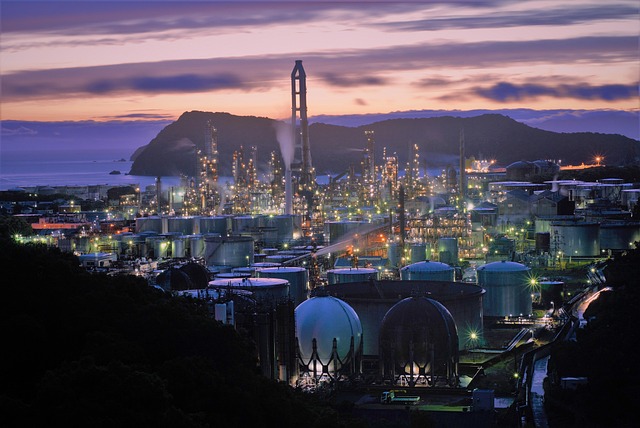
What is Facility Maintenance Management?
Facility maintenance management refers to the people, processes, and systems that maintain the assets and infrastructure of a facility — both the inside and outside of the building. This type of management differs in that specialized technicians are brought over to inspect the plumbing or HVAC for enclosed spaces, taking part in on-demand work orders critical to preventive maintenance.
The goal of facility maintenance (FM) is to continue production flow through the supply chain, despite the occurrences of breakdowns and the need to control MRO inventory. This article will explore in depth the scope and impact it has on properties, assets, and people, through well-executed planning that promotes machine longevity and reduces capital costs throughout the production lifecycle.
Physical assets will gradually deteriorate without a schedule for regular upkeep, further implying that FM has a hand in everything, on the ground or in the buildings.
What are the Different Types of Maintenance Management for Facilities?
Maintenance management can be predictive, time-sensitive, condition-based, or run-to-failure, each with its own set of practices. Time-based encloses all daily to monthly maintenance tasks whereas condition-based derives machine health from well-placed sensors. Many business properties will count on those strategies to perform facility operations and evaluate asset performance using a system of connected sensors.
Healthcare Facilities
Quite a lot goes into healthcare FM, with regards to patient and staff safety. It is composed of the upkeep at clinics, surgical centers, and pharmaceutical companies. Although the spread of disease is a major concern, toeing the line of compliance is equally important for medical instruments and intensive treatments at the hospital.
Facility managers are responsible for writing up policies, overseeing new construction efforts, keeping tabs on patient room sanitation, and inspecting emergency water/gas systems. A carefully-monitored environment is proven to improve intensive patient care. It’s also why security continues to be enforced through who gets access to buildings and patient records.
Laboratory Facilities
Laboratories face pressure to release new products, exhausting a ton of resources on R&D alone. Due to this, even minor setbacks like a missing record can delay an experiment. To get around that, research teams must be proactive about their preventive maintenance strategy and passing regulatory inspections, based on chemical safety standards.
Aside from having adequate supplies in the facility, there should be steps to monitor lab components like the fume hood. Supply chain logistics is a major time sink because glassware is essential to many procedures. It may benefit the scientists to form partnerships with qualified vendors so they can focus on innovations in drug development instead.
Maintenance Management for Warehouses and Distribution Centers
Warehouse maintenance seeks to maximize order fulfillment and minimize avoidable downtime. It has been shown to streamline warehouse processes from receiving products in various quantities to storing them in the proper condition. Those activities can influence customer satisfaction since items must be correctly picked, labeled, and shipped out.
Distribution centers will have to track incoming parts for their forklifts, conveyors, crates, and other equipment. A map of the floor plan would enable them to optimize space in the warehouse and use tracking tools to retrieve past purchase orders or work requests. Parts and inventories have to be restocked to continue industrial assembly.
Facility Maintenance Management for Properties
Many commercial buildings such as hotels, restaurants, schools, and offices, all need some form of maintenance – having someone repair electrical appliances or clean up the nearby landscape. It covers many aspects including project management, approaches to energy conservation, the comfort of occupants, and real estate in general.
Facility maintenance tools ensure the safety and functionality of properties, adding to their long-term value on the lease. From that point, it differentiates between hard and soft FMs, where one deals in services performed by a mechanic while the other denotes the people in charge of security, accounting, and so on.
How to Optimize Facility Maintenance Management Operations
In most cases, the quality of FM depends on how well you can coordinate each compartment, or utilize maintenance techniques to protect your tangible assets. As the facility manager, your job is to schedule plant audits, identify the root cause (e.g., human error, workplace hazard), and create work orders to remedy the problem.
To make the process easier, maintenance management software keeps the plant going with complete oversight of the facility interior, bringing equipment downtime to a controllable level. Once implemented, it will give rise to transparency in your team’s workflows, and automate the systems that drive productivity in your factories.
Building maintenance management is an excellent way to establish asset criticality, prolong the life of equipment, operate within your budget, and commit to a maintenance routine. To keep up with all the interconnected parts, facility maintenance management software will help you schedule workloads according to how many technicians and spare parts you have.
Through a Computerized Maintenance Management System, or CMMS, you can reduce overhead costs and perform operations consistently, by automating plant-wide activities to raise overall productivity and save time on documenting the repairs.

